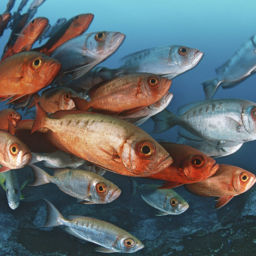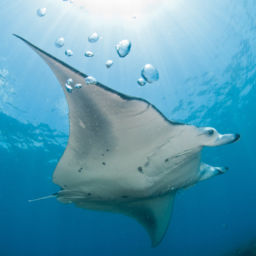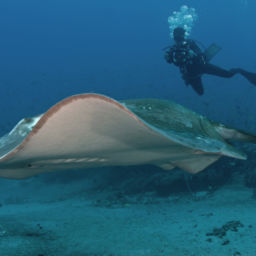The stormy squalls that sometimes ravage Ponta do Diablo are legendary. Yet only the beauty of the blue sky reflected on the surface of an unusually calm sea characterizes our voyage around the Devil’s Point. We have just departed Pemba, a sun-drenched port city on Mozambique’s picturesque north coast. We are headed for Situ Island, or Ilha Situ as it’s locally called, a remote paradise in the heart of the country’s Quirimbas Islands.
Situ Island Stories
I have heard many stories about the island from my husband, Grant, and his parents, Craig and Tessa. Together, my in-laws run Situ Island Resort, which hugs the island’s palm-fringed shore. Yet somehow this is my first visit to their Mozambican home. Despite their stories, I am unprepared for Situ’s spell. I’m enchanted from the moment we step out of the catamaran’s tender and onto the beach’s soft white sand.
With space for just 16 guests in private chalets constructed with palm-fronds and bamboo, the resort is both rustic and luxurious. The thoughtful, widely smiling staff gives the island the feeling of home — if home came with first-class meals, sandy-floored living rooms, and the sound of the ocean sighing contentedly a few steps from one’s front door.
By the time we’ve settled in, the sun is sinking toward the horizon and golden light is bathing the bay. The island dog, Mischief, accompanies us to the water’s edge. Here we gather to watch Situ’s resident moray eels congregating for their evening feed. Marine life in front of the resort is plentiful, thanks to Craig and Tess’ tireless efforts to negotiate a private reserve with the leaders of the island’s native fishing community.
Situ Island Diving
Over dinner, we schedule a double-tank expedition for the following morning. The catamaran makes quick work of the three-mile journey to the dive site. We soon find ourselves stepping off the stern and into the ocean. A quick glance downward confirms the spectacular visibility hinted at by the indigo color of the sea’s surface.
Situ’s signature feature is a series of dramatic wall sites. We spend the morning on two different stretches of the same wall, and an endless parade of tropical fish joins me on my exploration.
We see gingham-patterned longnose hawkfish going busily about their day within the safe perimeters of their sea fan homes. Schools of yellow and blue-striped snapper cascade like rivers of gold over the lip of the wall. Fleshy anemones provide shelter for territorial clownfish. Everywhere we look, the bright colors of the reef’s residents clash with or complement the endless blue of the ocean beyond.
As with every dive, there are stand-out moments, brief encounters that will remain with me when I return home to reality. I swim alongside a whitetip reef shark before it seeks out more interesting company. I discover a turtle close on our tail, and come face-to-face with one of the reef’s gargantuan Napoleon wrasse.
Over the next week, we have many other memorable encounters. A school of silver-scaled dusky rubberlips surrounds me, and I watch as a vertical wall made of densely-packed batfish emerges out of the gloom and hover quietly above a sand patch punctuated with inquisitive garden eels. Golden jacks encircle me during my safety stop, and I celebrate my birthday by meeting a fantastically friendly hawksbill turtle.
Away from it All
There is much to love about Situ’s dive sites. But for me, the area’s crowning glory is its sense of remoteness. In a week, we see a handful of brightly-painted local dhows transporting goods and islanders to the mainland. A dozen wooden fishing canoes seem to float in spite of the laws of science. We see only one other tourist boat, and no other divers. It’s as though we have this underwater playground to ourselves.
Nowhere is this more evident than on our penultimate dive. After spotting a reef-like aberration on the catamaran’s chart-plotter, Tess and I decide to explore a site that has never been dived before. It is late afternoon by the time we enter the water, and the sinking sun lends a golden glow to the reef. We find a new landscape teeming with life. Some of the most beautiful, untouched soft corals I have ever seen adorn the wall.
Incredibly, there is more to Situ than its spectacular diving. It is also a birdwatcher’s paradise. In just eight hours, we are able to identify and photograph at least 45 species living in the island’s interior. We also discover a magnificent baobab tree measuring some 60 feet (18 m) in diameter. We converse in broken Portuguese with local villagers before coming home to gorge ourselves on Craig’s gourmet cooking.
Situ Island is a haven for those who wish to wake up to the sound of the waves, and fall asleep beneath the blazing glory of the Southern Hemisphere stars. It is a wonderland of topside beauty, and of underwater seascapes still waiting to be discovered. Above all, this virtually unknown island in the heart of the Quirimbas is a place to make friends that become family, and to experience coastal Africa at its best.















